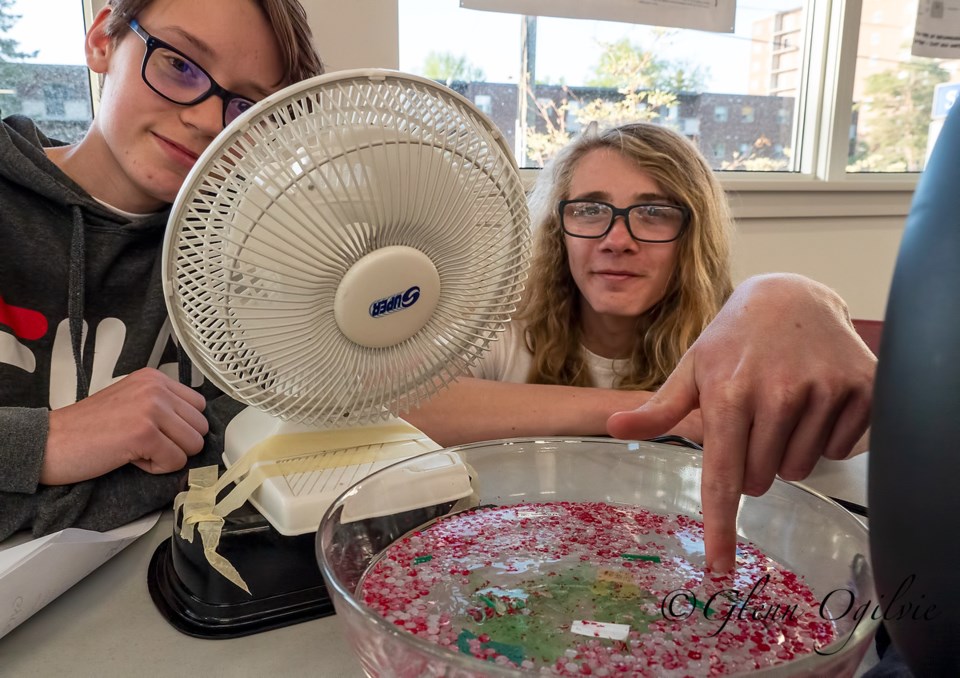Cathy Dobson
It started with a simple beach clean-up at Canatara Park and ballooned into a nine-month journey to go green.
This year, the 16 Grade 8 students at Sarnia Christian School incorporated the environment into as many language, art and science classes as possible, culminating in an eco conference attended by the public May 22.
“When we cleaned up the beach, 92.9% of the items we found were single use,” said Hudson Thomas, student greeter at the event.
“Cigarette butts were number one but there was a lot of plastic too.”
The amount of discarded plastic at local beaches and in the Great Lakes is a big concern, added Caleb Laidler, 14. “We decided to hold this conference to raise awareness. People don’t seem to realize how plastic is affecting them.”
He and classmate Riley Freer constructed a model to simulate ocean gyres and how they trap plastic and other garbage.
“We learned about gyres, as well as all about cleaning up the plastic,” said Riley. “(As a society) we have to learn how to recycle more instead of throwing everything away.”
Teacher Mary Abma said she utilizes project-based learning often but this year’s Grade 8 class took on the biggest project yet.
The months leading up to the eco conference involved everything from learning to construct wooden recycling bins for the schoolyard, making eco bricks from plastic waste, and writing to Tim Hortons to ask that the chain’s ‘roll up the rim’ promotion be held online rather than with single-use cups.
“Canatara Beach had a lot of Tim’s cups,” said Riley.
“But Tim Hortons didn’t write us back,” said Caleb.
Hudson’s favourite part of the project was the creation of a business the students call Eco-Waters Art.
“We learned how to make paper and do artwork from the garbage we collected, then sell it,” he said while manning a sales display at the conference.
Abma also brought in local artist Dave Moore to teach silk screening so the students could design a logo for t-shirts they got from Goodwill. The shirts sold for $5 at the event with the proceeds covering conference expenses.
Guest speaker Vanessa Gray from Aamjiwnaang spoke about making local industry more accountable to the environment and nearby residents.
“From now on, be conscious of this issue,” she told the students. “…expect this journey you’ve started to be an uphill climb in the dark.”
Sarnia’s Peter Smith also made a presentation about how much plastic is in local waterways.
He noted the tiny plastic pieces incorporated in some of the students’ artwork made from plastic garbage.
Those are from a truck that spilled its load into Lake Superior in the 1990s,” Smith said. “If you go to Canatara Park, you’ll find them and they’ll probably keep coming for decades to come.”
What is even more concerning are the nanoparticles from washing our clothes, he said.
As it turned out, that’s something Abma’s students learned about too. They showed the crowd of about 40 a specially-designed “Guppy Friend Washing Bag” that keeps microfibers from escaping into the water stream.
“Our eco conference gave the students a way to take action,” said Abma. “They’ve been very enthusiastic about it.
“They proved they are really interested in the environment, as are most young people.”
